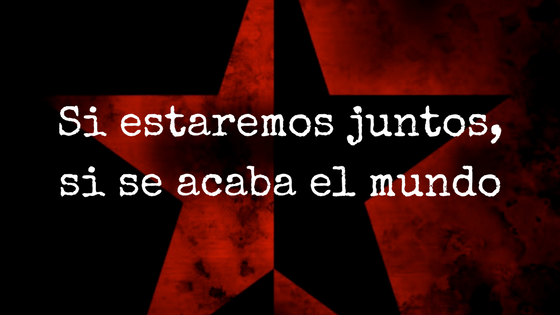

I have a student this year in one of my morning classes, who I’ll call Xavier, that is the truly the life of the party. Since the first day of school he has participated, told jokes, and brought a sense of joy to the class of forty, who are still mostly asleep at that hour. Xavier never fails to scream “Hola Señorita” at the top of his lungs, whenever he sees me on campus, no matter how far away I am. He is full of life and always smiling. He plays the trumpet. Last month, he surprised me by playing me a song during break. He sings along to the songs I play in class so that now when I hear those songs I think of them as Xavier’s songs. One of his favorite songs is “Yo no sé mañana” by Luis Enrique. It’s one of my favorites too.
A few years ago, Xavier’s brother was shot to death at the age of 18, in front of their apartment building. His brother had also been my student. Violence is nothing new to my students or myself.
A few years ago, after conducting our yearly earthquake drill, a student didn’t return back to class with the rest of us. She later went on transfer schools. By the next summer, we had received the news she hanged herself.
This last summer, a former student’s sister was run over and killed by a train.
A few weeks ago, a student received a text from his mom that the Los Angeles area high school she worked at was on lock-down because of a shooting at the nearby middle school.
I could go on with story after story of the ways in which violence and death have touched my students and my own life on a nearly daily basis. I could talk about the numerous lock-downs my friends and I experienced throughout our own schooling, waiting for either our parents to pick us up or for the local police department to declare the all-clear. I could talk about our adult lock-down experiences as teachers; for one of my dearest friends, a recent lock-down extended into the late evening, and she wasn’t able to get home until after her own children were asleep.
While I’ve been “locking down” at schools for 25 years now, the newest lock-down drill that we practice is the “active shooter” drill, where we have a set of policies and procedures we are instructed to follow in the event of an active-shooter on campus. The strategy I have taken with these drills, as with all of my teaching, is to find the spaces for joy, even in the midst of the difficulty. So, I play music and we conga line away from the windows. Or I let the kids choose the lock-down playlist. I don’t know how seriously to take the drills, in all honesty.
I don’t know if we would be better off if I practiced fear and terror, making the kids be quiet and hide under their desks.
I don’t know if normalizing this level of violence through drills is a legitimate way of keeping the kids and myself safe, or just a new way of institutionalizing terror.
I don’t know whether this “new” type of violence my students and I are being taught to fear is worse than the actual violence we’ve encountered our entire lives.
I don’t know how well one can prepare for the unknown.
All I know is that every morning, Xavier, who was 12 when his brother was murdered in front of their home, greets me with a booming “Hola Señorita,” and sings these lines to me and the rest of the class:
Yo no sé mañana, yo no sé mañana
Si estaremos juntos, si se acaba el mundo
Yo no sé mañana, yo no sé mañana
Quién va a estar aquí
***
Rosemary Hendriks is a high school teacher in Southern California and PhD Candidate at Claremont Graduate University.


